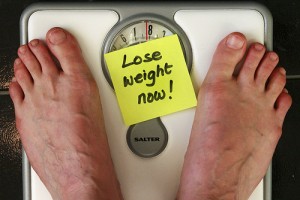 If you have a goal of losing weight, I’m a big fan of moving more and eating smarter. It’s healthy, sustainable and - best of all - it works.
If you have a goal of losing weight, I’m a big fan of moving more and eating smarter. It’s healthy, sustainable and - best of all - it works.
But what else can help dieters achieve their weight loss goals? A new study set out to answer just that. Published in the Journal of the Academy of Nutrition and Dietetics, the study looked at a number of weight loss tools, tips and strategies by following 120 overweight women on a twelve month diet guided by registered nutritionists. The women were charged with losing 10% of their weight in six months - and then keeping it off for the next six months.
Based on the data, researchers found three key strategies that worked for the participants.
- Don’t skip meals. Skipping meals - as I mentioned in a post last week - is bad for your health and you waistline. It deprives your body of nutrients, slows your metabolism and causes you to overeat and crave unhealthy food options. According to the researchers in this study, meal skippers lost 8 fewer pounds than non-skippers.
- Journaling. Many weight loss coaches recommend journaling - and for good reason. The study found that journalers lost 6 more pounds than non-journalers. Each day, journalers record the foods consumed and the amount of calories contained therein. Doing this helps dieters track calories and provides some level of accountability for the food eaten.
- Don’t go out for lunch. With many restaurants loading their dishes with fried foods, butter and salt, eating out can be a real challenge for health-conscious individuals. In fact, researchers found that individuals who ate at restaurants for lunch at least once per week lost 5 fewer pounds than those who didn’t. Those extra calories really add up!
Have you ever tried any of these weight loss strategies? Did they work for you? Let me know in the comments below.
















